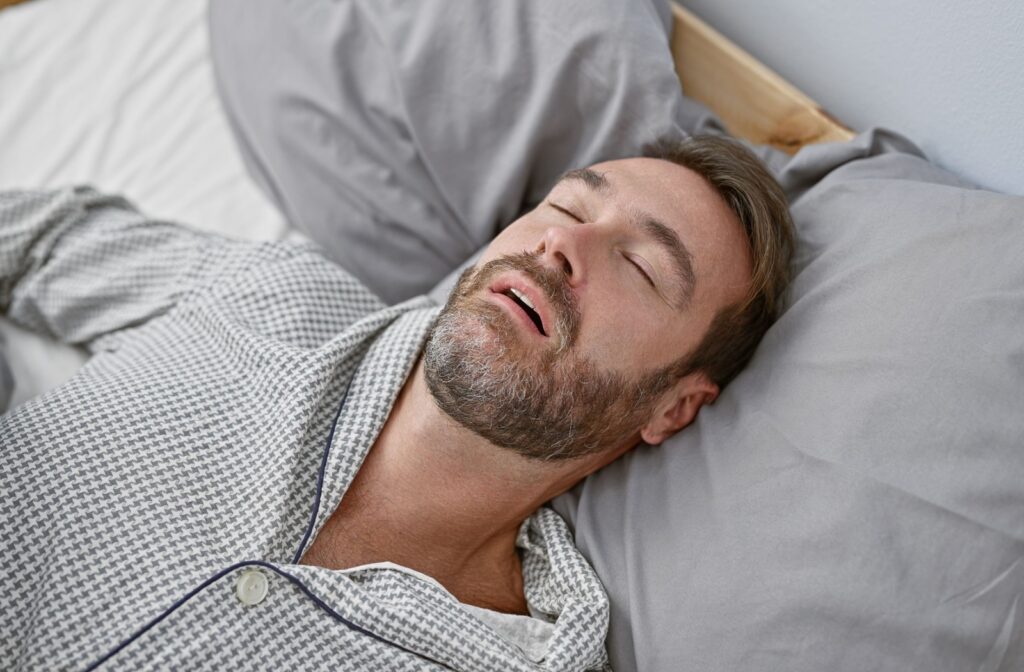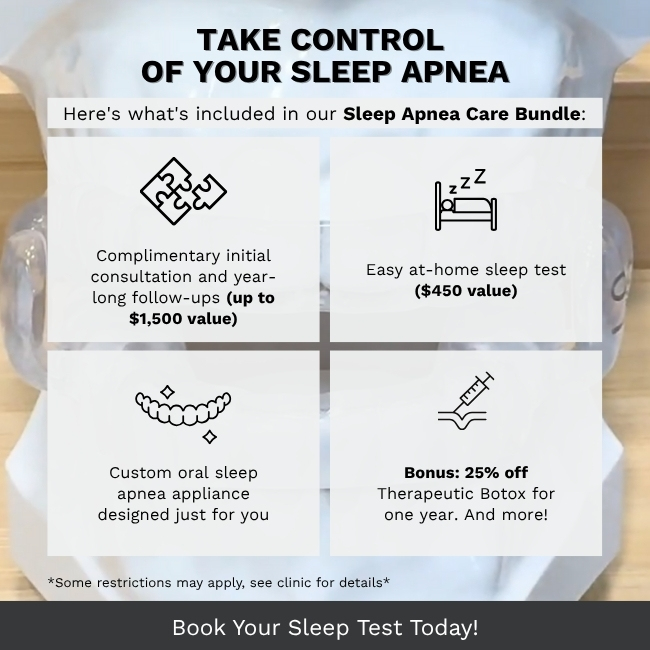Can You Have Sleep Apnea Without Snoring?

Sleep apnea is a potentially serious disorder characterized by periodic stops in breathing while a person sleeps. You may experience excessive drowsiness during the day, headaches, irritability, and difficulty focusing.
While sleep apnea is popularly associated with snoring, and many people with sleep apnea do snore, it’s possible to have sleep apnea without snoring on occasion.
Sleep apnea rarely goes away on its own, and severe sleep apnea can increase your risk of chronic health conditions. Fortunately, it’s treatable, and your dentist also has tools to help you manage obstructive sleep apnea.
About Sleep Apnea
Sleep apnea is a disorder in which a person experiences pauses in breathing during sleep. These breaks (called “apneas”) may last 10 to 30 seconds and generally repeat many times in one night.
Untreated sleep apnea can have serious consequences, from stroke and heart attack to motor accidents and workplace injuries.
Sleep Apnea Symptoms
Symptoms of sleep apnea can include:
- Excessive daytime sleepiness
- Loud snoring or gasping & choking sounds
- Snores followed by quiet pauses
- Headaches in the morning
- Difficulty focusing, learning, or reacting
- Feeling irritable
- Dry mouth or jaw discomfort
While about 90% of people with obstructive sleep apnea snore, it’s less common if you have central sleep apnea. Crucially, snoring doesn’t automatically mean you have sleep apnea. Conversely, you can experience sleep apnea even if you don’t snore.
Effects of Sleep Apnea
If left untreated, sleep apnea can significantly affect your body and mental health.
You can experience a range of health problems like hypertension, heart attack, and stroke, along with low mood and sexual dysfunction. Other risks include a higher risk of workplace injury and motor vehicle accidents.
Canadians with sleep apnea also tend to have other chronic health issues, such as diabetes, mood disorders, and cardiovascular problems.
Types of Sleep Apnea
There are 4 main types of sleep apnea: obstructive, central, mixed, and sleep-hypoventilation.
Obstructive Sleep Apnea
Obstructive sleep apnea (OSA), the most common type of sleep apnea, is caused by a blocked or narrowed airway leading to pauses in breathing.
OSA can happen when the throat muscles relax, leading to the collapse of structures like the tongue into the upper airway, which blocks breathing. OSA affects around 1 billion adults around the world.
Central Sleep Apnea
With central sleep apnea, the brain fails to tell your muscles to keep you breathing. People with central sleep apnea often have other diseases, such as heart failure, and treating the contributing medical condition may help manage the sleep apnea symptoms.
Mixed Sleep Apnea
Mixed sleep apnea is when a person has a combination of obstructive and central sleep apnea. They may benefit from a combination of treatment approaches to manage contributing factors.
Sleep-related hypoventilation
With sleep-related hypoventilation, a person doesn’t take in enough oxygen during the day and night, resulting in imbalanced oxygen and carbon dioxide levels in the blood. People with sleep-related hypoventilation may benefit from a CPAP or BiPAP machine.
How Dental Devices Can Help With Sleep Apnea
If you’re experiencing sleep apnea symptoms, the first crucial step is to get a sleep test. You can contact your doctor. They may refer you to a sleep clinic for a thorough assessment and diagnosis. Or, you can contact a sleep trained dentist, like us, to get set up with a sleep study immediately that you take home and do in the comfort of your own bed.
Understanding your specific type of sleep apnea is essential for finding the most effective treatment plan.
Many people with obstructive sleep apnea may benefit from a CPAP machine. However, dental devices can also help manage symptoms, offering a comfortable and often less intrusive alternative.
Your dental professional can play a key role in exploring these options with you if they are trained in dental sleep medicine.
Oral Appliance Therapy for Obstructive Sleep Apnea
The Canadian Dental Association supports using oral appliance therapy to manage obstructive sleep apnea. Your dentist will likely recommend that you get tested to confirm your diagnosis so your dentist can plan an appropriate treatment.
A mandibular repositioning device (MRD) is a customized dental appliance that shifts the jaw forward, widening the airway to promote airflow. The device can help prevent breathing issues during sleep.
At Northwest Dental, we use digital impression technology to create a custom-fitted dental appliance, reducing bulk and increasing your comfort so you can sleep (and breathe) easier.
Support for Sleep Apnea at Northwest Dental
We dispense a sleep study you can take home. It connects to your smartphone via an App and will give your results to us within 24 – 48 hours.
You should get professional help to manage moderate and severe sleep apnea and protect your long-term health. However, if you have a mild form, you can help lessen symptoms with lifestyle changes:
- Sleep on your side to help open your airways
- You can get into the habit by propping yourself up with pillows behind you
- Have a consistent sleep schedule
- Try to go to bed & wake up at around the same time every day
- Quit smoking & avoid alcohol & drugs
- Smoking, alcohol, caffeine, & sleeping pills can make sleep apnea worse & potentially lead to longer & more harmful apneas
- Practice physical activity consistently
- Exercise can help you improve sleep & lose weight (a risk factor for sleep apnea)
Is sleep apnea affecting your rest? If you have questions or recognize potential symptoms, take our online questionnaire. Northwest Dental offers oral appliance therapy for sleep apnea, and we can work with your sleep physician to access follow-up sleep studies.
Let’s talk about improving your sleep and overall health—contact us to book an appointment with one of our team!


